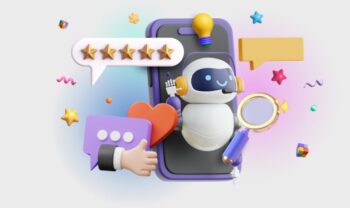Implementing a chatbot on WhatsApp has become an essential strategy for businesses in Latin America looking to optimize their communication, improve customer service, and scale their operations. Although the process may seem intimidating at first, following a structured guide and having a robust platform like Aurora Inbox can greatly simplify the transition. This detailed guide will take you step-by-step through the implementation process, from initial conceptualization and management of the WhatsApp Business API to the launch and ongoing optimization of your chatbot.
[Placeholder for Infographic: Visual timeline of WhatsApp chatbot implementation steps, from planning to launch and monitoring]
Phase 1: Strategic Planning and Preparation
A successful implementation begins with solid planning. Before touching any technological tool, it's crucial to define your goals and prepare the groundwork.
Step 1: Define Clear Objectives and Scope of the Chatbot
Ask yourself: What specific problems will the chatbot solve? What outcomes do you expect? Some common goals include:
- Reduce response time to frequently asked questions.
- Increase the generation of qualified leads.
- Improve customer satisfaction (CSAT).
- Automate appointment scheduling or reservations.
- Offer basic technical support 24/7.
Also define the scope: What tasks will the chatbot perform and which will remain with human agents? A well-defined scope will prevent "analysis paralysis" and allow you to focus on the most impactful features first.
Step 2: Understand and Request the WhatsApp Business API
As we've discussed, for a professional chatbot, you'll need the WhatsApp Business API. This includes:
- Verify your Facebook Business Manager (Meta Business Suite): Make sure your business is verified by Meta.
- Choose a Phone Number: It must be a dedicated number that is not active on another WhatsApp account.
Example with Aurora Inbox: When you sign up for Aurora Inbox, our team will advise and support you through every step of the WhatsApp Business API application process, simplifying the process with Meta and ensuring you meet all requirements.
Step 3: Designate a Team or Project Manager
While the platform is intuitive, you'll need someone (or a small team for larger SMBs) to lead the project, make decisions about conversation flows, oversee AI training (if applicable), and coordinate with the BSP. This person will be the primary point of contact.
Phase 2: Chatbot Design and Development
Once your API is approved and your goals are clear, it's time to build your chatbot.
Step 4: Design Conversation Flows and User Experience (UX)
Map out how you want the interactions to go. Consider:
- Entry points: How will users start the conversation?
- Welcome message: Clear, concise, and establishing the bot's capabilities.
- Menus and options: If you use a flow-based or hybrid approach.
- Bot Personality: Will it be formal, friendly, technical? It should align with your brand.
- Error Handling: What will the bot do if it doesn't understand a question?
- Scaling to humans: Clearly define when and how the conversation will be transferred to a human agent.
Use diagramming tools or the visual features of your chatbot platform to design these flows.
[Screenshot Placeholder: Example of a conversation flow designed on the Aurora Inbox platform, showing different paths and options]
Step 5: Build and Configure the Chatbot on the Chosen Platform
Using your provider's tools (e.g., Aurora Inbox), begin building the chatbot based on the designed flows. This may involve:
- Configure responses for FAQs.
- Create interactive menus.
- Establish rules for lead qualification.
- Connect to knowledge databases.
Step 6: Train the Artificial Intelligence Model (if applicable)
If your chatbot uses AI to understand natural language, this step is crucial. You'll need to "feed" the model with:
- Intentions: The purposes or goals that users have when interacting (e.g. “check_order_status”, “schedule_appointment”).
- Entities: Specific information that the bot needs to extract (e.g. order number, date, type of service).
- Examples of Sentences (Utterances): Multiple ways users could express each intent.
- Knowledge Base: FAQs, manuals, relevant web content.
Example with Aurora Inbox: Our platform allows you to easily upload your FAQs, documents, and web links. The AI system processes this information so your virtual agent can answer questions intelligently and contextually, continuously learning from interactions in Latin American Spanish.
Step 7: Integrate with External Systems (CRM, ERP, etc.)
To maximize functionality, integrate your chatbot with other business tools. This could allow the bot to:
- Access customer history from your CRM.
- Check stock availability in your inventory system.
- Register new leads directly into your CRM.
- Process payments through a gateway.
Check your chatbot platform's integration capabilities and configure the necessary connections.
Phase 3: Testing, Launch, and Optimization
Before your chatbot interacts with all your customers, it's vital to ensure its quality and performance.
Step 8: Perform Thorough Testing
Test all aspects of the chatbot:
- Flow tests: Navigate all possible conversation paths.
- Comprehension tests (IA): Ask questions in different ways, with typos, using jargon.
- Integration tests: Check that the connection to other systems is working correctly.
- Scaling tests: Ensure that handoffs to human agents occur when they should.
Involve different members of your team in testing to gain diverse perspectives. Fix any bugs or unexpected behavior.
[Placeholder for GIF Demo: Animation showing someone interacting with a WhatsApp chatbot in testing, identifying a bug, and then the bot responding correctly after adjustment]
Step 9: Launch (Go Live)
Once you're satisfied with the tests, it's time to launch your chatbot. Consider a phased (pilot) rollout if possible, starting with a small group of users or for a limited set of queries. This will allow you to gather real feedback and make final adjustments before a full launch.
Promote your new WhatsApp support channel on your website, social media, emails, and other customer touchpoints.
Step 10: Continuous Monitoring, Analysis, and Optimization
The work doesn't end with the launch. It's a continuous process of improvement:
- Monitor performance: Use your chatbot platform's analytics (e.g., Aurora Inbox) to track KPIs like chat volume, resolution rate, most frequently asked questions, and customer satisfaction.
- Collect feedback: Both from users and your human agents.
- Optimize flows: Identify bottlenecks or points of friction in conversations.
- Update the knowledge base (IA): Add new questions and answers as they arise.
- Retrain the AI model: Periodically, to improve your accuracy and understanding.
Example with Aurora Inbox: Our analytics dashboard gives you detailed insights into your chatbot's performance. Plus, our AI is designed to learn from interactions, and we provide you with tools to easily monitor and refine its knowledge, ensuring continuous improvement.
In Conclusion: An Iterative Journey Towards Intelligent Communication
Implementing a chatbot on WhatsApp is a transformative project that requires careful planning, choosing the right platform like Aurora Inbox, and a commitment to continuous improvement. By following this step-by-step guide, SMEs in Latin America can navigate the process from API to deployment effectively, unlocking the numerous benefits of intelligent automation on the region's most popular messaging channel. Remember, it's an iterative journey: plan, build, test, launch, and constantly optimize to ensure your chatbot remains a valuable asset to your business.



